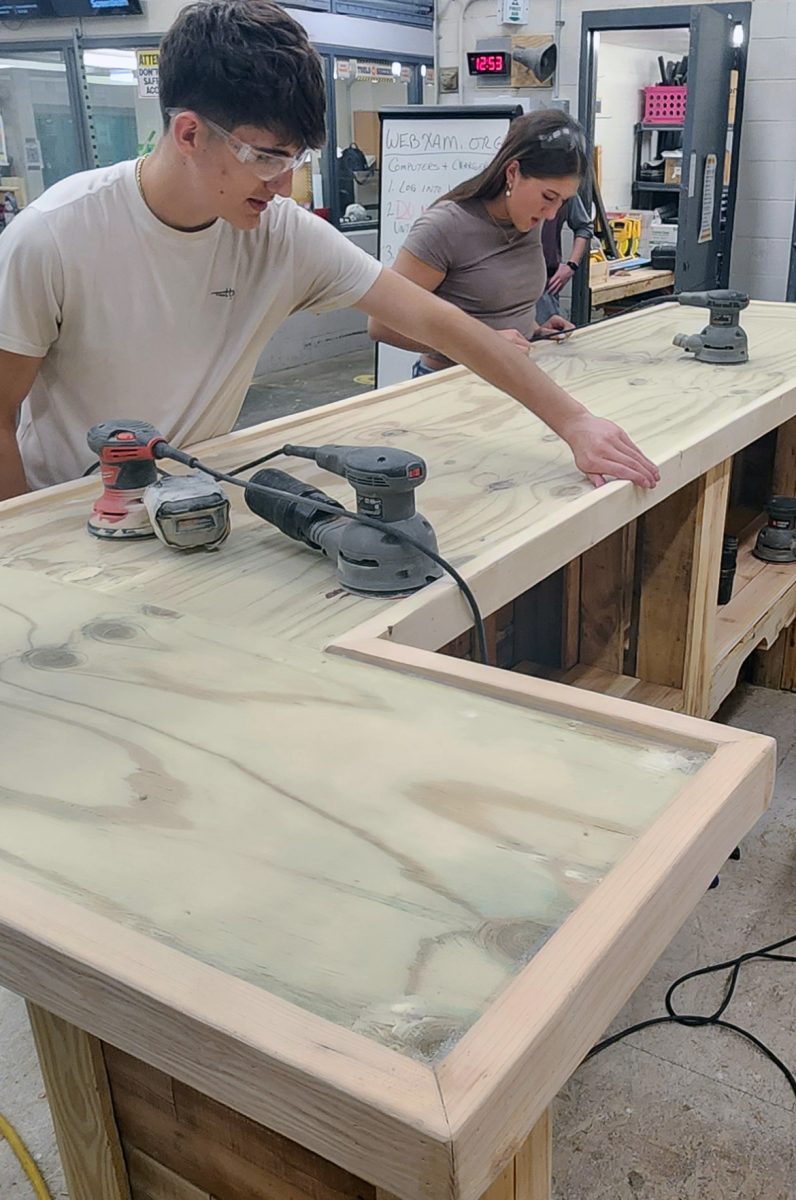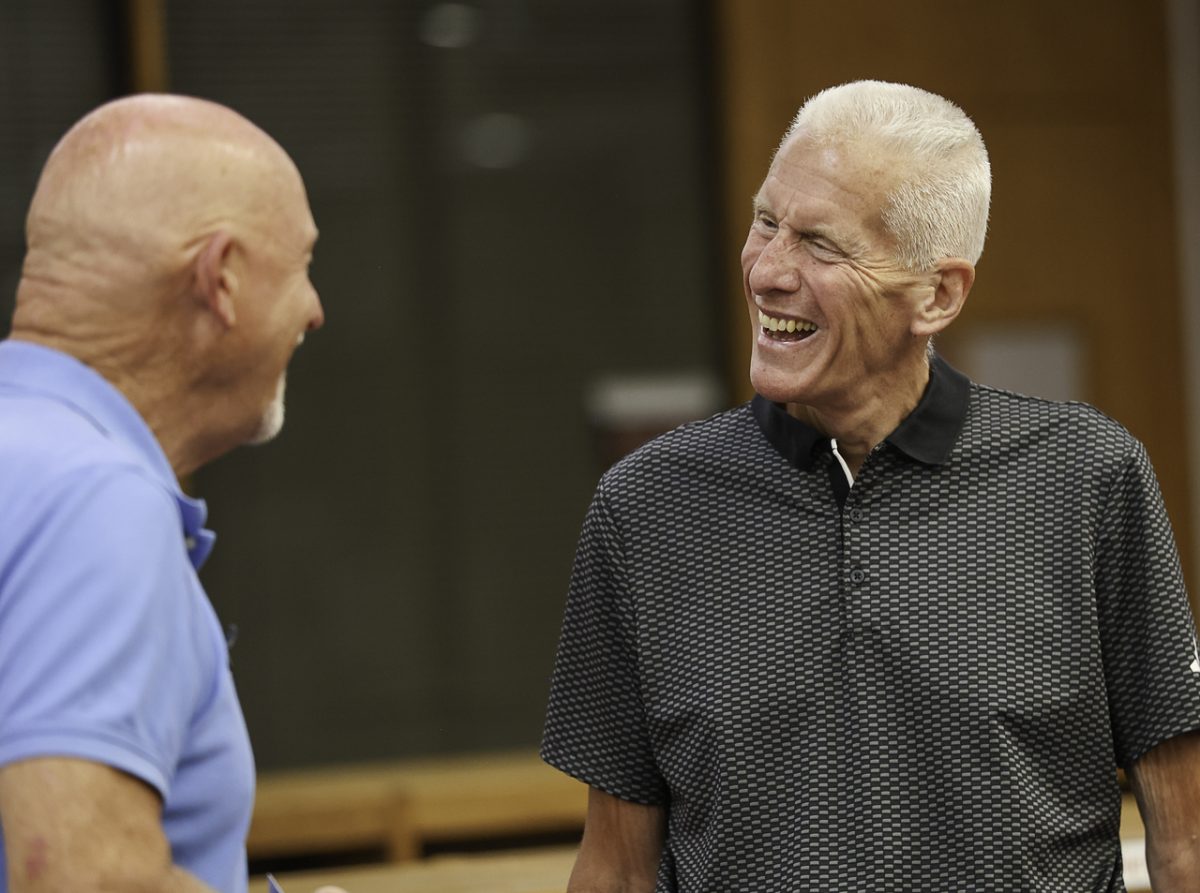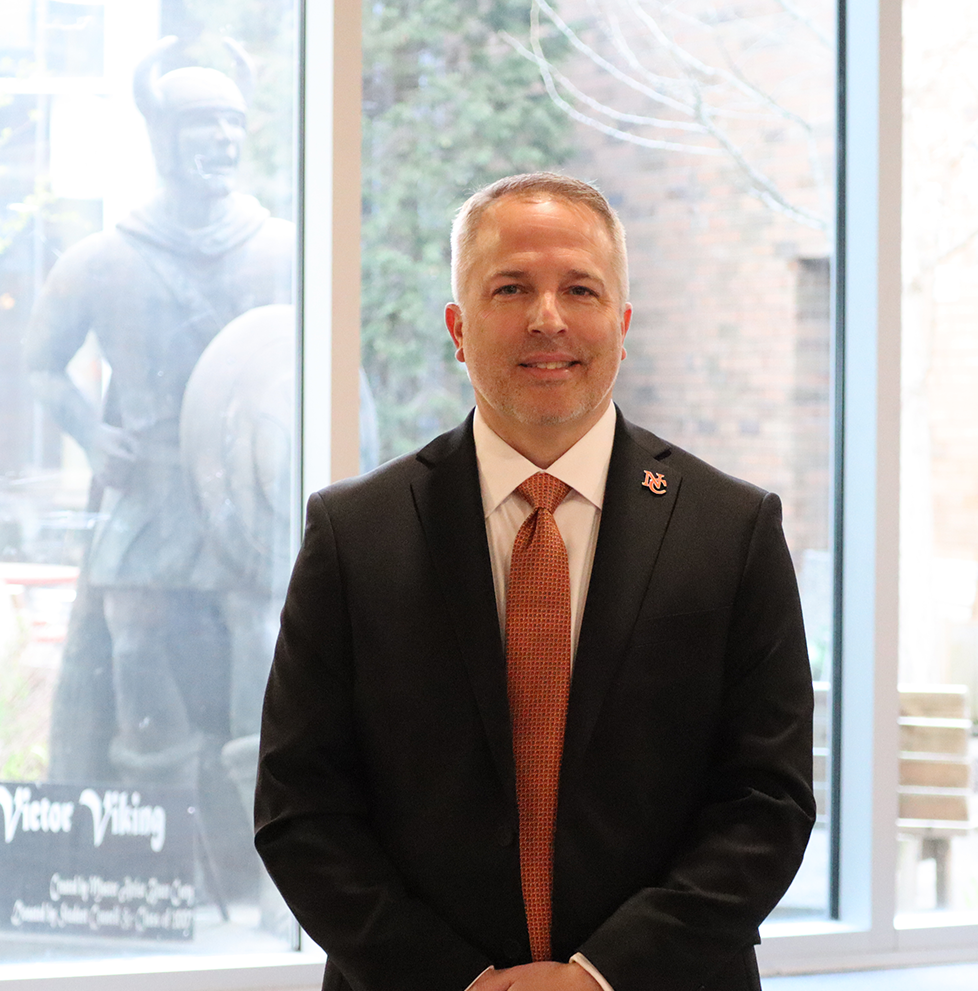Hoover’s construction classes have been hard at work on several projects throughout the year that have benefited the community and the school district. The Viking Views sat down with construction teacher Mr. Ashton McKelley.
“For levels one and two, we follow a curriculum that provides a structured approach to learning the basics of construction,” he said. “For level three, students have a bit more freedom to brainstorm and propose projects, as long as they align with the overall curriculum. Students are honing their skills in construction, including measuring, cutting, assembling and finishing wood projects. Beyond technical skills, they’re developing problem-solving, teamwork, communication and project management skills.”
This year, the construction classes have accomplished many projects, including a dog agility course, a barbecue stand and bookshelves.
Dog Agility Course
Q: How did the idea for building a dog agility course come about?
A: The idea came directly from Shannon Morgner, who needed a set of agility equipment for her rescue dogs. After hearing her request, we saw it as a wonderful opportunity for the students to apply their skills in a way that would directly benefit the community and help the dogs at Hopebridge Farms.
Q:Were there any unique construction challenges when building the course pieces (e.g., ramps, tunnels)?
A: Yes, there were several challenges, particularly in ensuring the pieces were stable but lightweight enough to be moved around. The ramps had to be angled correctly for the dogs to navigate them safely, and the tunnels needed to be durable enough to withstand outdoor weather conditions while providing a safe environment for the dogs. Ensuring that the materials were safe for the dogs was another key challenge.
Q: Did the students work with any outside organizations, like animal shelters or trainers, during the project?
A: We primarily worked with Shannon from Hopebridge Farms to ensure the designs were suitable for the dogs’ needs. While we didn’t collaborate directly with trainers, Shannon provided valuable feedback on what would work best for the dogs in terms of safety and functionality.
Q: How did you ensure the materials used would be safe and durable for dogs?
A: We chose materials that were both safe and weather-resistant. We also ensured that the wood was properly sanded to avoid any rough edges that could harm the dogs. The materials were selected for their durability to withstand outdoor conditions.
Barbecue Stand
Q: What was the goal or inspiration behind creating the barbecue stand?
A: The goal was to use extra pallets we had in the classroom to create a functional and creative project. The barbecue stand serves as a great learning tool for students to practice their skills, while also creating a piece that could be used for school or community events.
Q: Did the students have input on the design? If so, how did they collaborate on that?
A: Yes, the students had significant input in the design. We began with a brainstorming session where everyone pitched their ideas. The students then collaborated to refine the design, keeping in mind the function of the stand. Collaboration was key in ensuring that each component of the design worked well together. We worked closely with our head custodian, Don King, who we built the barbecue stand for.
Q: Were there any elements of plumbing, electrical, or other trades involved in building it?
A: No, the barbecue stand didn’t require plumbing or electrical work. The project was primarily focused on carpentry and construction skills, such as building a stable structure, cutting and assembling wood and applying finishes.
Bookshelves
Q: Were the bookshelves custom-built for specific classrooms or locations?
A: Yes, the bookshelves were custom-built for the storage room in the English department. We measured the available space in the room and designed the shelves to fit the room’s aesthetic and functional needs.
Q: How did students approach the design to make them both sturdy and visually appealing?
A:The students approached the design with a focus on functionality (making sure the shelves were deep enough to hold books) while also considering the visual appeal (such as ensuring the design matched the classroom’s decor). They used their creativity to choose materials and finishes that complemented the spaces they were designed for.
Q: What types of materials were used for the shelves and why?
A: We used high-quality wood for the bookshelves, as it is sturdy and can support the weight of books. The wood was also chosen because it’s relatively easy to work with and can be finished to create a clean, professional look. Additionally, the finish was chosen to be durable and resistant to wear and tear.
Q: How have students or teachers responded to having these shelves around the school?
A: The response has been very positive. Teachers have expressed appreciation for the custom-made shelves and students take pride in seeing their work in use around the school. The bookshelves have made the storage room more organized and functional.





![Mr. Jeff Wendorf [here in 2016] has served as NCCS Superintendent for the past nine years.](https://thevikingviews.com/wp-content/uploads/2025/05/Mr.-Wendorf-Viking-Views-Stock-Photo-use-these-words-as-photo-credit-e1747405506238-747x1200.jpg)
